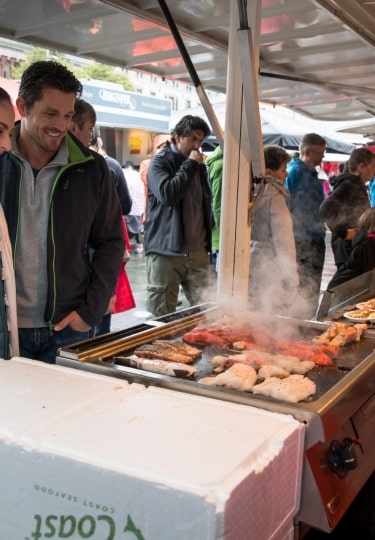Scandinavian food varies widely across the region. Generally, though, this is a hearty cuisine based on fresh, local ingredients.
While Scandinavian cuisine comes with plenty of traditional dishes that immediately spring to mind—gravlax, cinnamon buns, waffles, reindeer, and aquavit—there’s a sophisticated food movement now in Denmark, Sweden, and Norway.
You’ll find Michelin-starred restaurants where local chefs put their own twist on fresh, seasonal ingredients, with delicate presentation and delicious flavors.
Here are 22 Scandinavian dishes to try on your travels through the region.
Gravlax
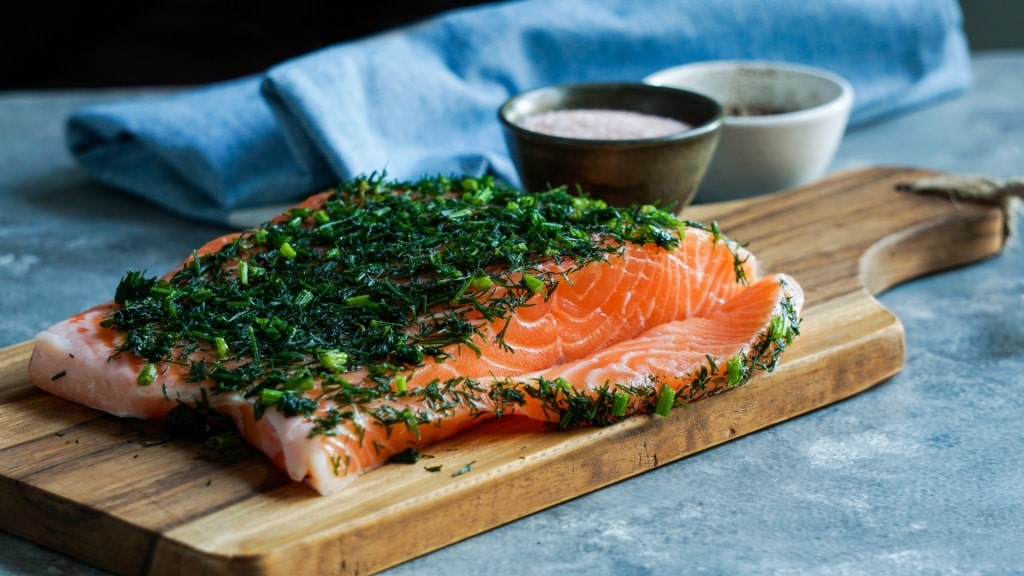
Gravlax
A delicacy widely available all over Scandinavia, gravlax is salmon that’s been cured, but not smoked. The marinade is typically salt, sugar, dill, black pepper, and sometimes berries.
Gravlax is typically served as a starter with dill and black pepper. Some like it covered in mustard, or hovmästarsås.
Kaviar
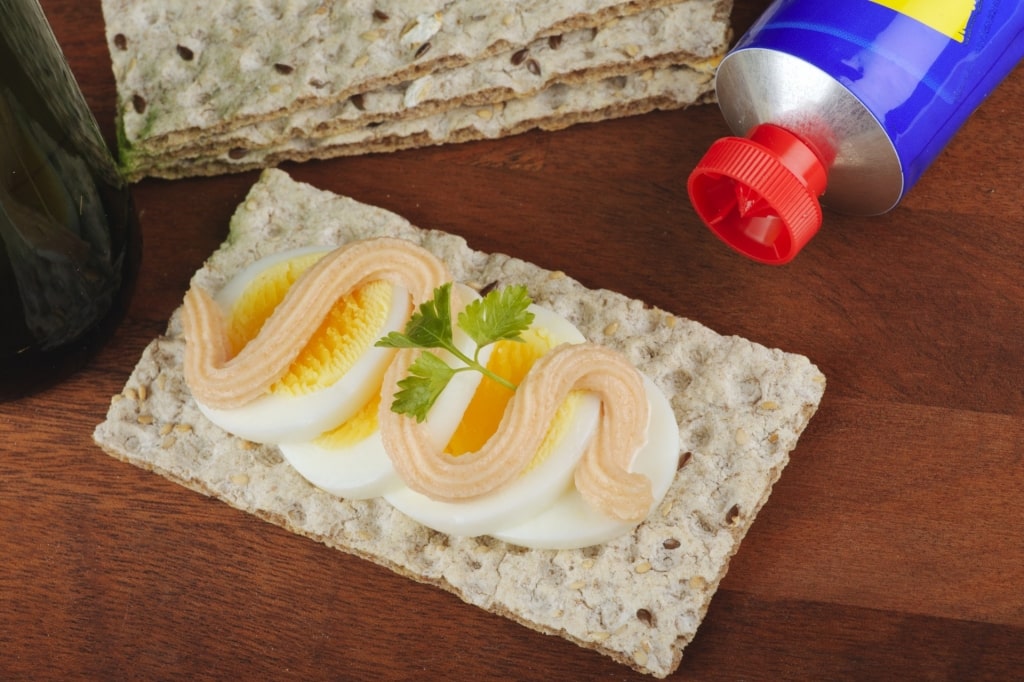
Kaviar
While not as rarefied as the prized beluga caviar, Norwegians have their own version, smoked cod roe, which is more of an everyday food.
It’s usually found in a tube, like a toothpaste tube, and squeezed out onto rye bread for breakfast, sometimes accompanied by an egg. If you like it, buy a tube or two to take home.
Lingonberries
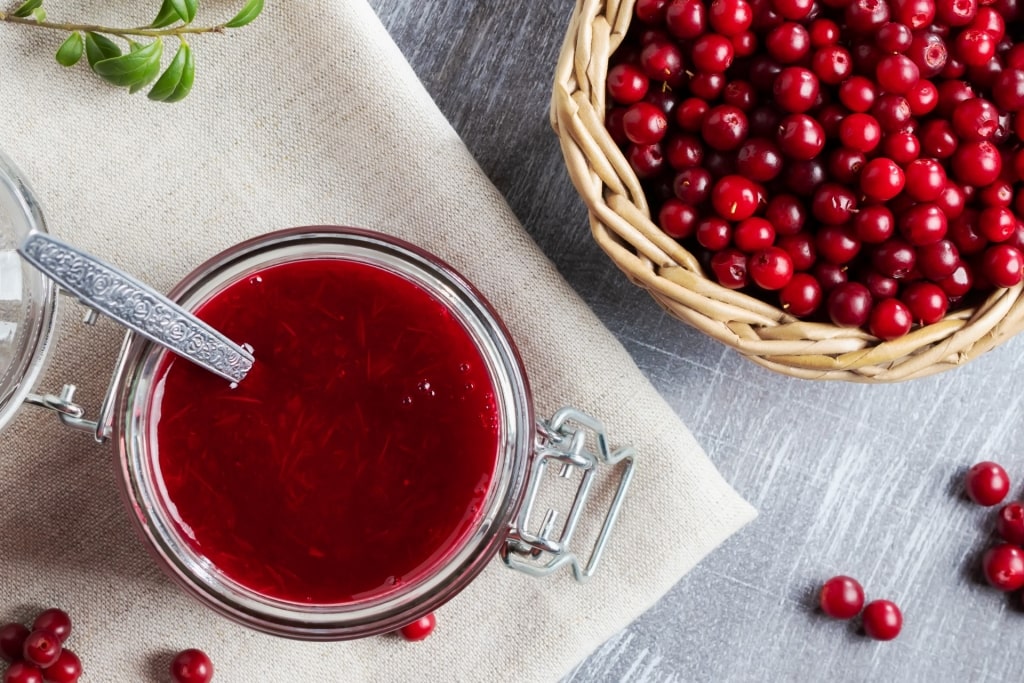
Lingonberries
These small, sharply flavored red berries are an absolute staple of Scandinavian cuisine. They grow in Norway, Finland, and Sweden and are harvested enthusiastically in August. Savvy cooks keep them in the freezer year-round.
Lingonberries are made into a jam that accompanies meat, most typically meatballs. It provides a wonderfully tart sensation that’s sweet at the same time thanks to the sugar in the jam. They’re also served on potato pancakes with bacon at breakfast.
Read: What Is Finland Known For?
Cloudberries
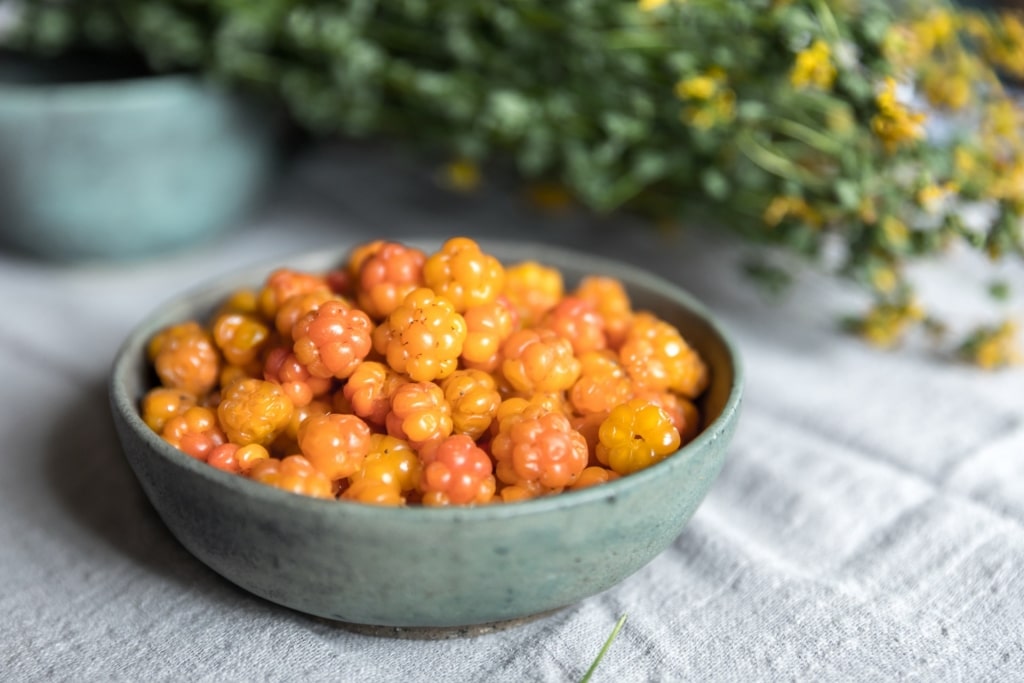
Cloudberries
Amber cloudberries grow on the boggy ground of the tundra in northern Scandinavia and are shaped like raspberries.
You may recognize them as bakeapples, which grow in northern latitudes of the U.S. and Canada. In Europe, they have different names: hjorton in Sweden, multebær in Denmark, and in Norway, molte.
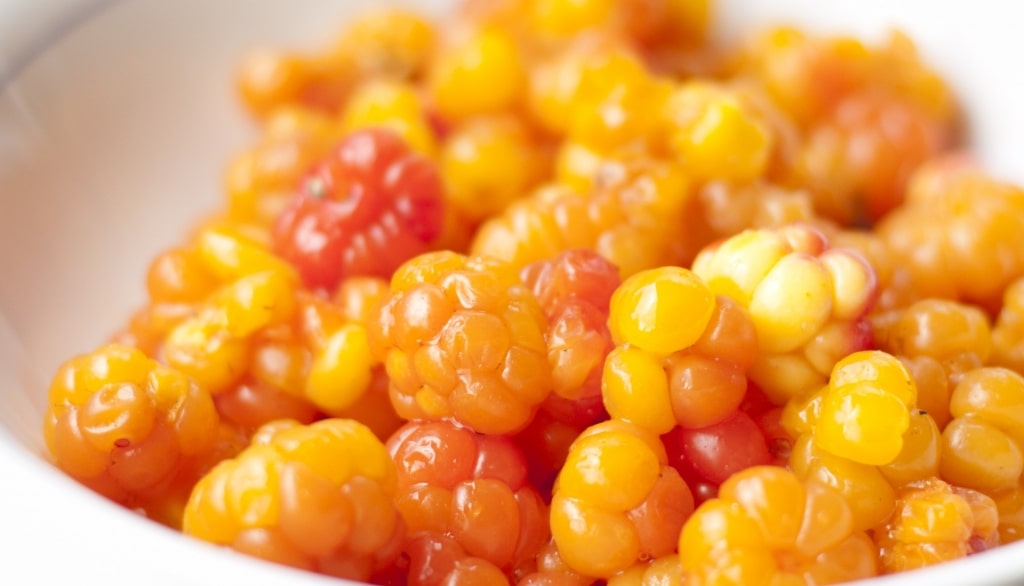
Cloudberries
Cloudberries have been a popular delicacy since the days of the Vikings, who prized the berries, which are packed with Vitamin C, for their protection against scurvy.
Cloudberries are usually cooked in a jam and eaten with anything from a cheese platter to ice cream, or on top of a dollop of cream on a waffle.
Köttbullar (Meatballs)

Köttbullar (meatballs)
Swedish meatballs are possibly the country’s most iconic dish, and you’ll find them everywhere—beyond Sweden, too. If there’s one Scandinavian food that will give you a real taste of the region, this is it.
Meatballs are served with boiled or mashed potatoes, a cream sauce, cucumber, and tart lingonberry jam. The meat can vary—some recipes incorporate pork, veal, and beef, for example.
Smørrebrød
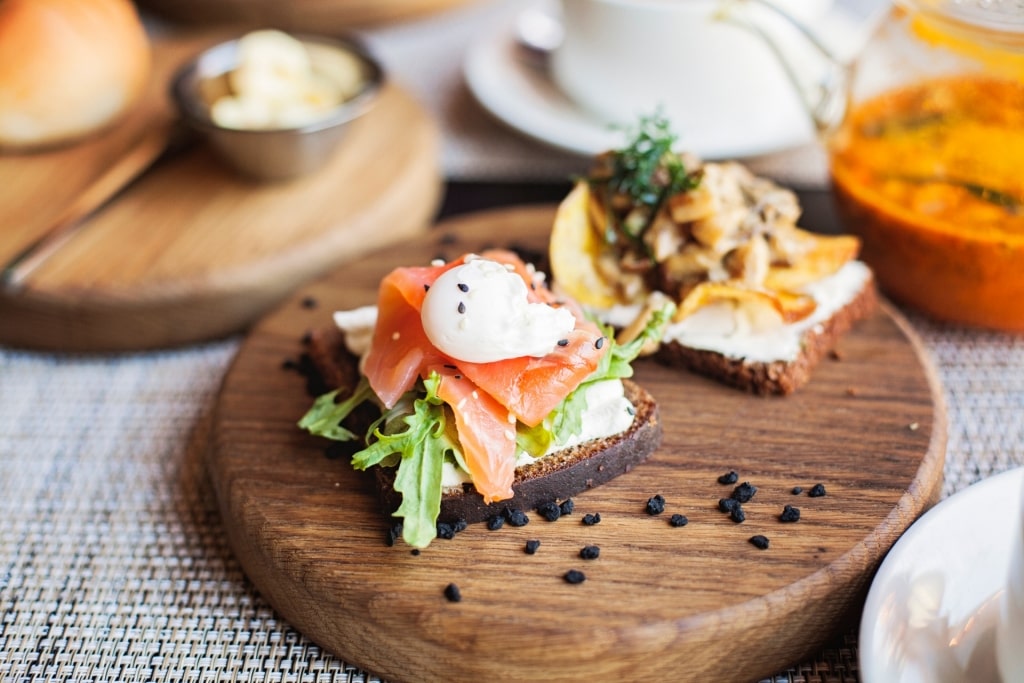
Smørrebrød
Smørrebrød simply means “buttered bread” in Danish and is a generic term for rich sourdough rye bread served with any manner of toppings.
Indeed, an entire buffet may progress through different smørrebrød, starting with fish, moving on to meat, and finishing with cheese and fruit.
The colorful, elegantly presented open sandwiches you see today are an art form. It’s a far cry from the original smørrebrød, which was simply chewy bread smeared with lard eaten by laborers and farm workers who needed the energy from the carbs.
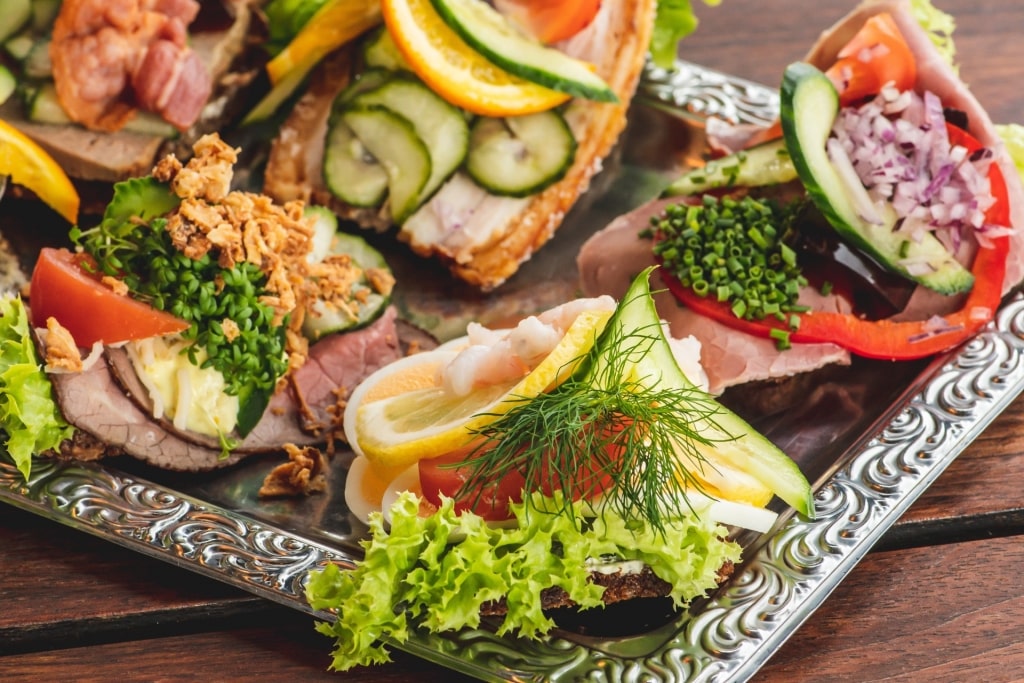
Smørrebrød
Now, popular toppings include fish with remoulade and dill; roast pork with gherkins and pickled cabbage; beef with horseradish; sliced meatballs; and shrimp with mayo, sliced lemon, and dill.
To taste some of the finest smørrebrød in Copenhagen, head for Schønnemann on Hauser Plads. It’s one of the city’s oldest lunch spots, and the smørrebord comes with a shot of schnapps.
Smörgåsbord

Smörgåsbord
While smørrebrød is a Danish open sandwich, the Swedish smörgåsbord is slightly different in that it’s a spread of small dishes that are not necessarily bread-based. And unlike a buffet, where there’s no particular etiquette in what you eat and when, a smörgåsbord is tackled in a specific order.
You may, for example, come across bowls of pickled herring to start with, served with crispbread and shots of aquavit. Then you may move onto beetroot salad, cured and smoked salmon, and shrimp, followed by meatballs with potatoes, lamb or venison, and later, cheese.
The final dish is coffee served with sweet pastries or cake. Unsurprisingly, with all this to get through, a smörgåsbord is never a meal to be rushed.
You’ll find variations on smörgåsbord in Denmark, too, often with roast pork as the main course.
Stegt Flæsk (Roast Pork)
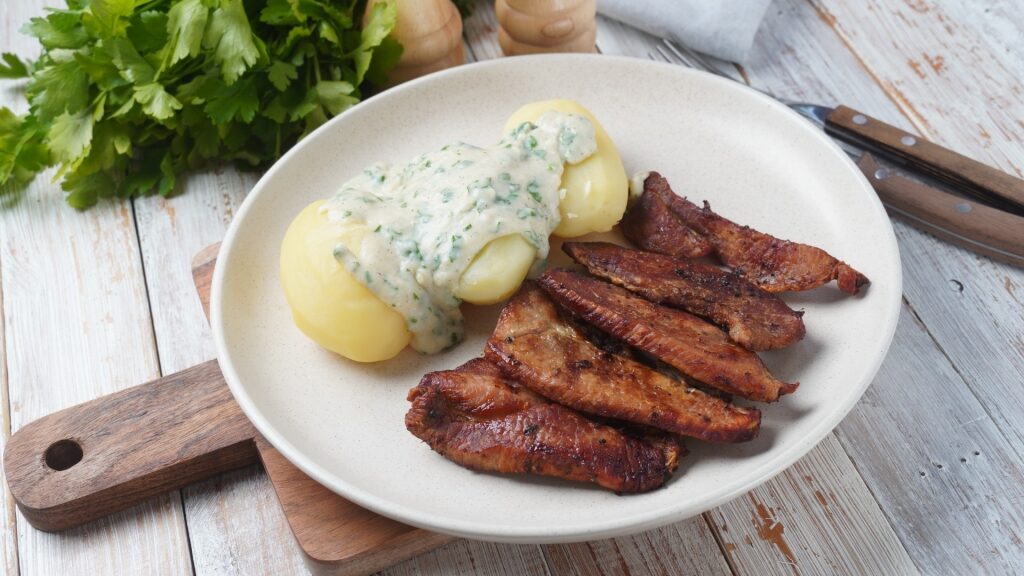
Stegt Flæsk (roast pork)
This is Denmark’s national dish, comprising thick slices of fried pork belly served with boiled potatoes and a parsley sauce. Pork belly has been popular ever since humans have kept pigs, back as far as the Stone Age, although the parsley sauce came later.
Danes, who consume a lot of pork, dig into stegt flæsk to warm up in winter or cook it outside on a barbecue in summer. It’s as typical a dish in Denmark as, say, roast beef is in Britain.
Fårikål (Lamb Stew)

Fårikål (lamb stew)
Norway’s national dish, this lamb or mutton stew is simple, yet adored. It even has its own national day—the last Thursday of September—so if you’re in Norway then, you are guaranteed to come across fårikål.
This Norwegian dish is very basic. Lamb or mutton on the bone is layered with cabbage leaves with a splash of water and a scattering of black peppercorns and slow-cooked for hours. This creates a meaty, nutritious stew in which the mutton falls right off the bone.
Pickled Herring
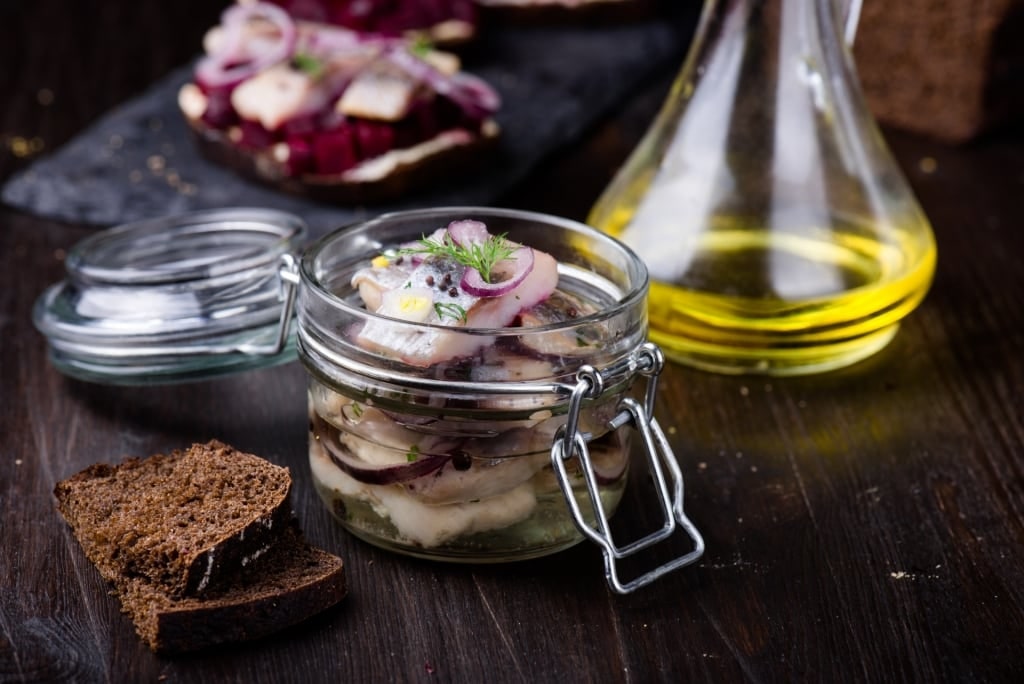
Pickled herring
Herring across Scandinavia comes in dozens of forms, whether fried, in a soup, boiled, on a sandwich, marinated, or smoked.
Pickled in a sweetish brine of water, sugar, salt, vinegar, and spices is the most common iteration of herring. Every chef has their own version. Try it on buttered bread or with onions and potatoes.
Read: Norwegian Culture: Fascinating Customs & Traditions
Reindeer
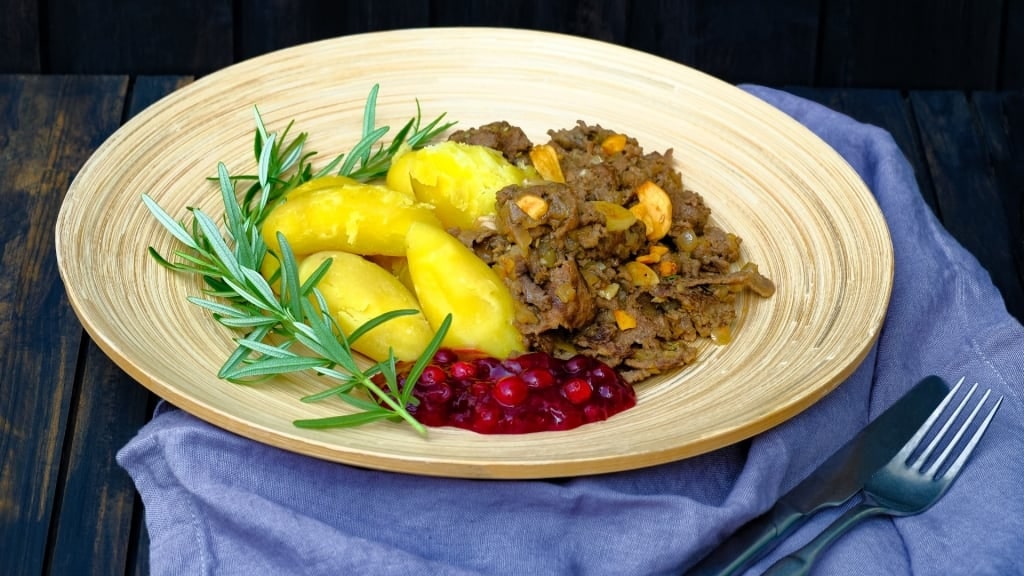
Reindeer
While to some it may seem strange to eat “Rudolf”, reindeer meat is popular in Scandinavia and is lean, gamey, and tender.
It’s served in all forms, from sausages to steak. Norwegians eat reindeer as a steak, called finnbiff, or roasted with a hearty gravy and served with berries.
Crayfish
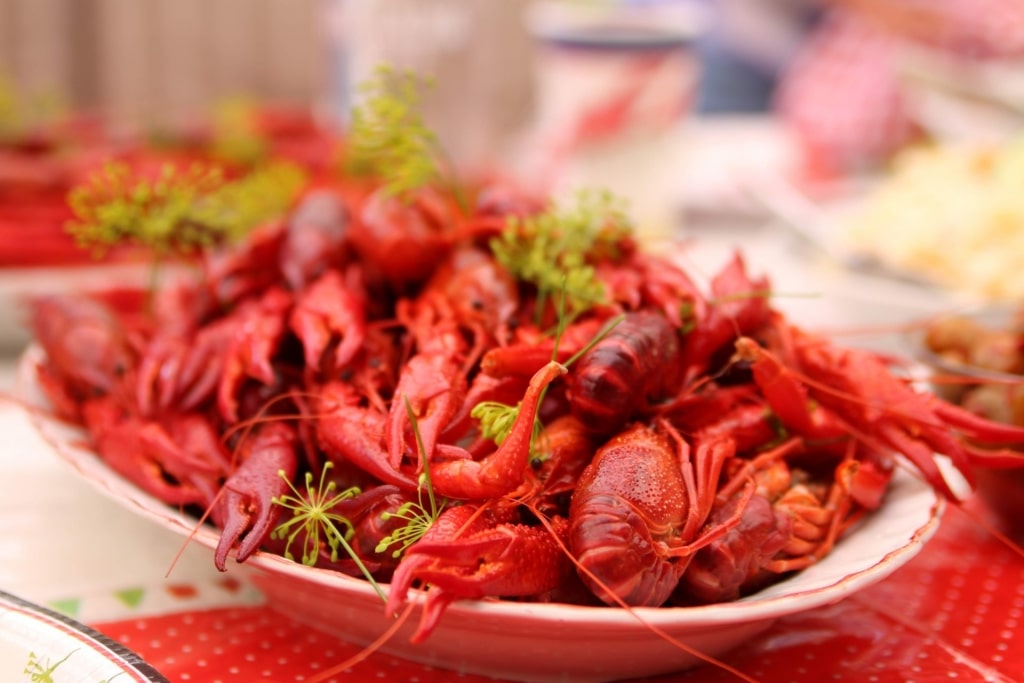
Crayfish
Swedes love crayfish (like small lobsters) and feast on them all through August, the main crayfish season. Special parties, kräftskiva, are dedicated to the crustaceans, taking place outdoors and carrying on late into the night.
The crayfish are cooked in water with salt and sugar and served with lashings of dill. Guests bring side dishes like cheese, pies, fresh-baked bread, and aquavit or beer. Crayfish parties involve a certain amount of ritual, not least a drinking song to be sung before downing the aquavit.
Kanelbullar (Cinnamon Rolls)
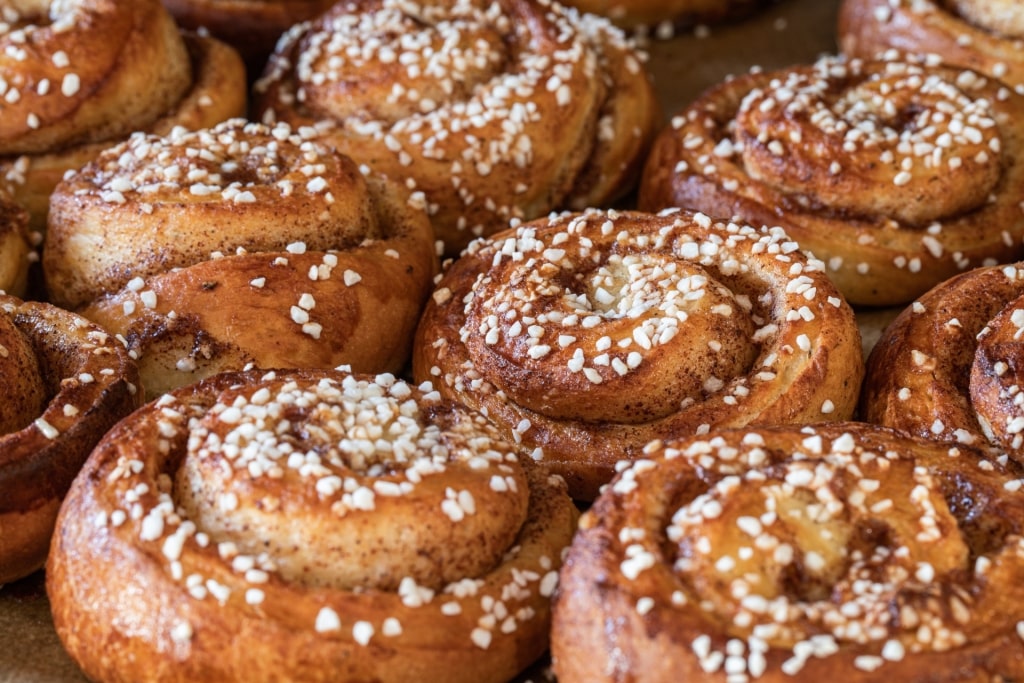
Kanelbullar (cinnamon rolls)
Swedish cuisine is rich with ritual, and the traditions surrounding kanelbullar, or twisted cinnamon buns, are no exception.
These buns are eaten all day long, with morning coffee (fika time), at lunch, during afternoon tea break, or after dinner. Many recipes include cardamom, too, for an extra layer of flavor.
The kanelbülle even has its own day, October 4, designated “Kanelbullens dag”.
Princess Cake
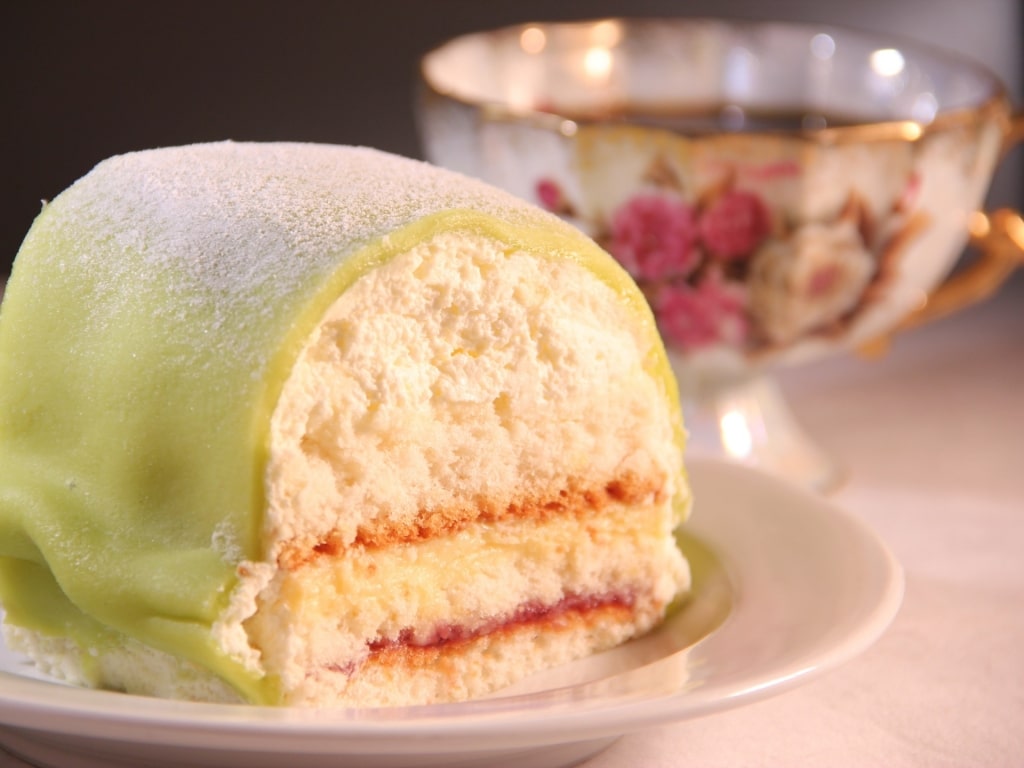
Princess Cake
Sweden’s most famous cake, the sweet, fluffy Princess Cake (prinsesstårta) is a smooth dome of green marzipan concealing a delicious mix of layered light sponge, whipped cream, crème patisserie, and jam. Some cooks add hints of vanilla or citrus.
The cake got its name in the 1940s when the chef of the Swedish royal family began to prepare it for the three princesses. You’ll find it in any self-respecting patisserie today.
Read: Fascinating Cities in Scandinavia to Explore
Brunost
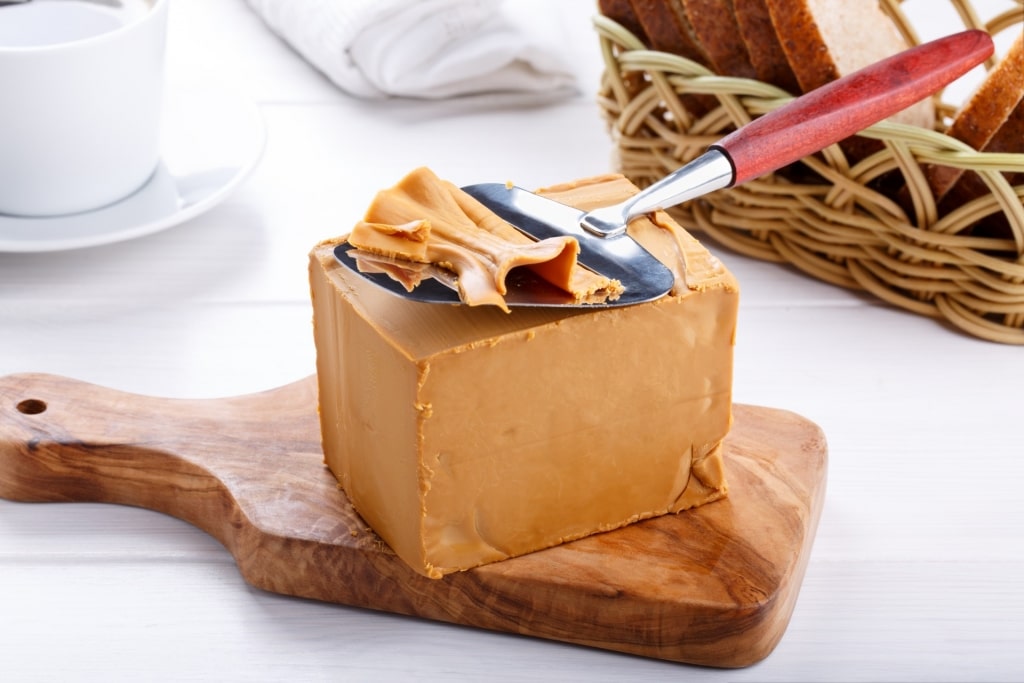
Brunost
Norwegians adore their famous brown cheese, Brunost, although to visitors, it can be an acquired taste. The cheese dates back to the times when farmers would use every resource they had, including left-over whey, to make cheese, combined with milk and cream.
The result is a caramel-flavored cheese, if that’s not too difficult to imagine. You’ll find Brunost on breakfast buffets, served in sandwiches, for lunch, as a pancake filling, and on waffles. It’s eaten in thin slivers, rather than as chunks.
Craft Beers
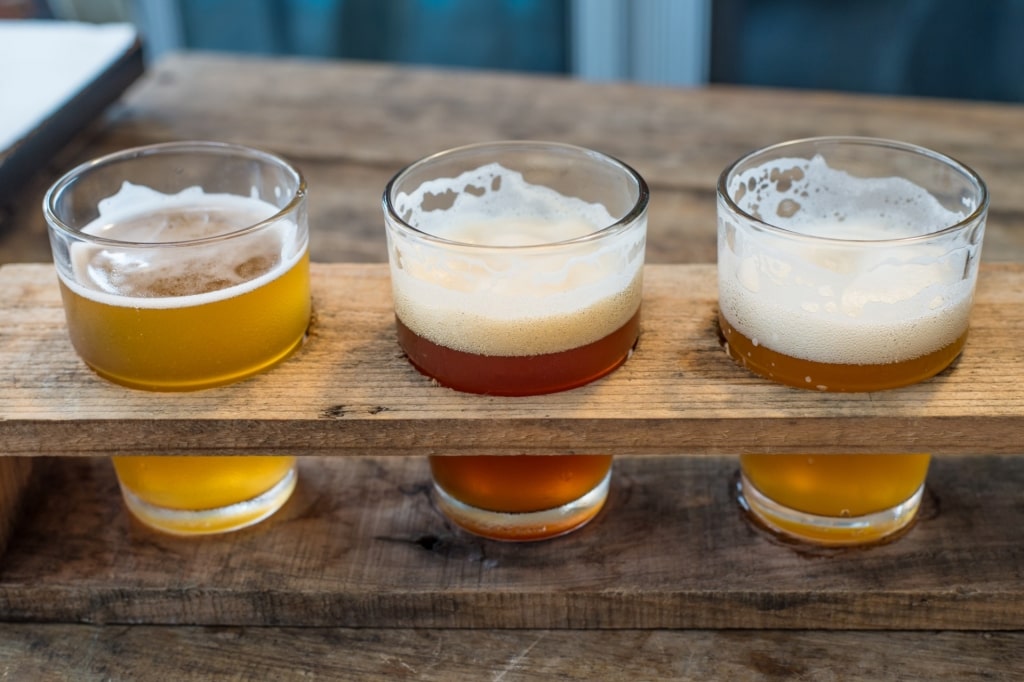
Craft beers
Scandinavia has a thriving craft beer culture, and Denmark would claim to be its epicenter; there are 50 craft breweries in the Copenhagen area alone.
If you want to try just one during your day in Copenhagen, head for Taphouse on Lavendelstræde, close to the City Hall. With 61 taps, this is one of the largest craft beer establishments in Europe and is always buzzing.
Read: Best Food Cities in Europe
Hasselback Potatoes
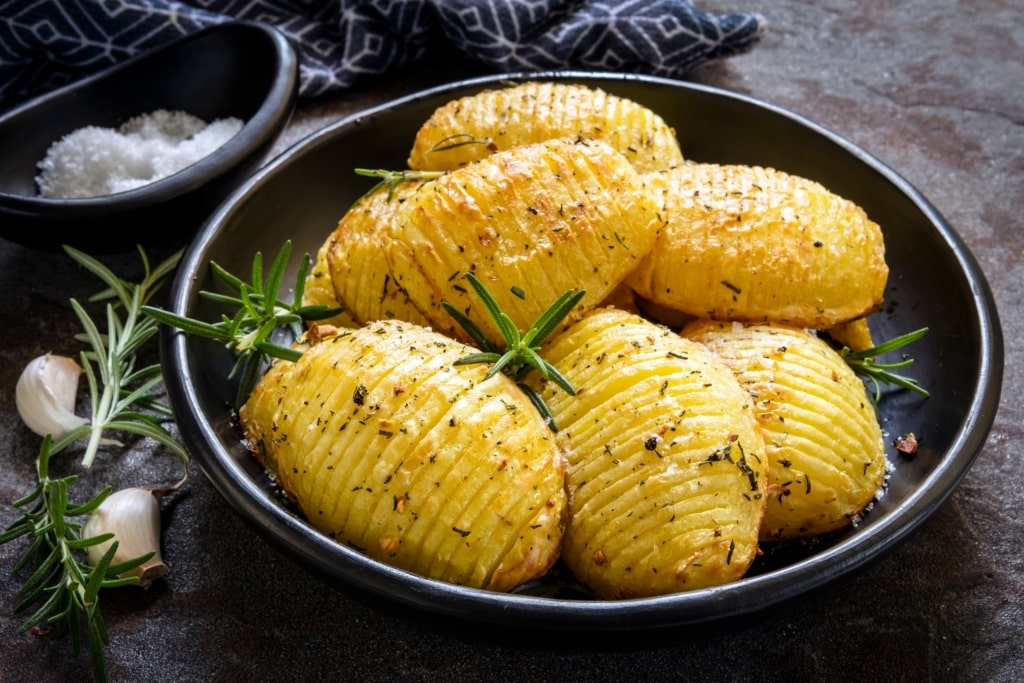
Hasselback potatoes
Hasselback potatoes are essentially roasted potatoes—but what’s different about them is that the top side of the potato is sliced with several very thin cuts, like a fan. When the potato roasts, the outside becomes deliciously crispy, the inside remaining soft.
Hasselback potatoes, which were invented at the Hasselbacken restaurant in Stockholm, can be topped with anything—butter, sour cream, herbs, garlic, or cheese.
Raggmunk (Potato Pancakes)
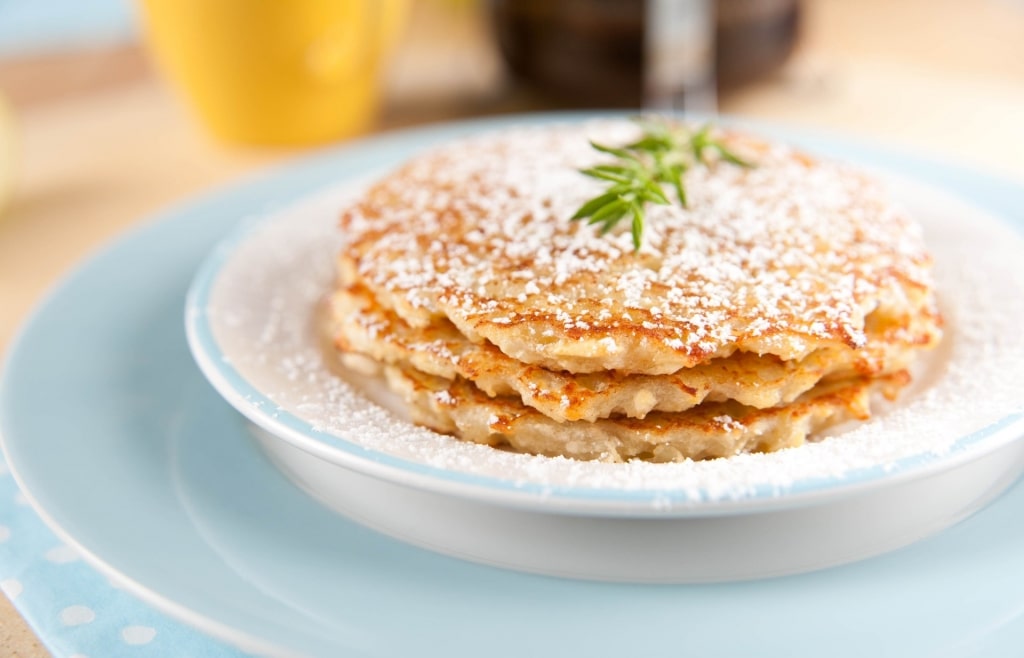
Raggmunk (potato pancakes)
Raggmunk, or Swedish potato pancakes, are a filling and delicious breakfast dish. Potato is grated and mixed with an egg batter, and then fried; it’s a very simple dish.
Served with bacon and the inevitable dollop of lingonberry jam, with a cup of strong coffee on the side, raggmunk will set anybody with a big appetite up for the day.
Aquavit
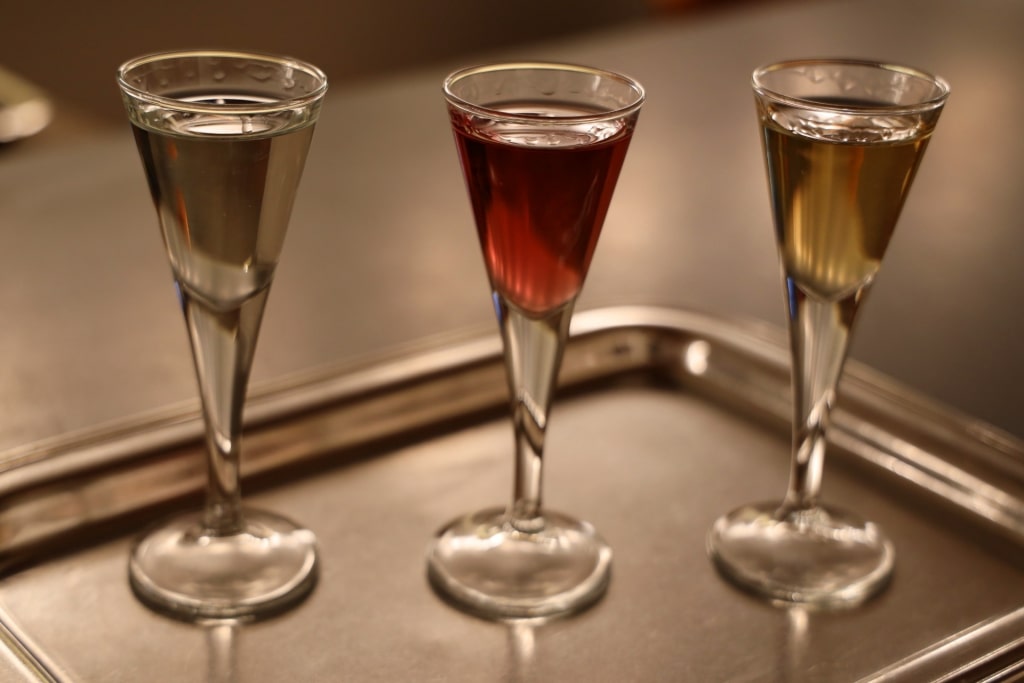
Aquavit
You won’t travel far in Scandinavia without being offered a shot of aquavit, or akavit in Denmark. Distilled from grain or potatoes and flavored with different herbs or spices, aquavit goes with pretty much anything.
Most typically, it’s downed as shots with a smörgåsbord, as a chaser to pickled herring dishes, or at crayfish parties.
Wienerbrød (Danish Pastries)
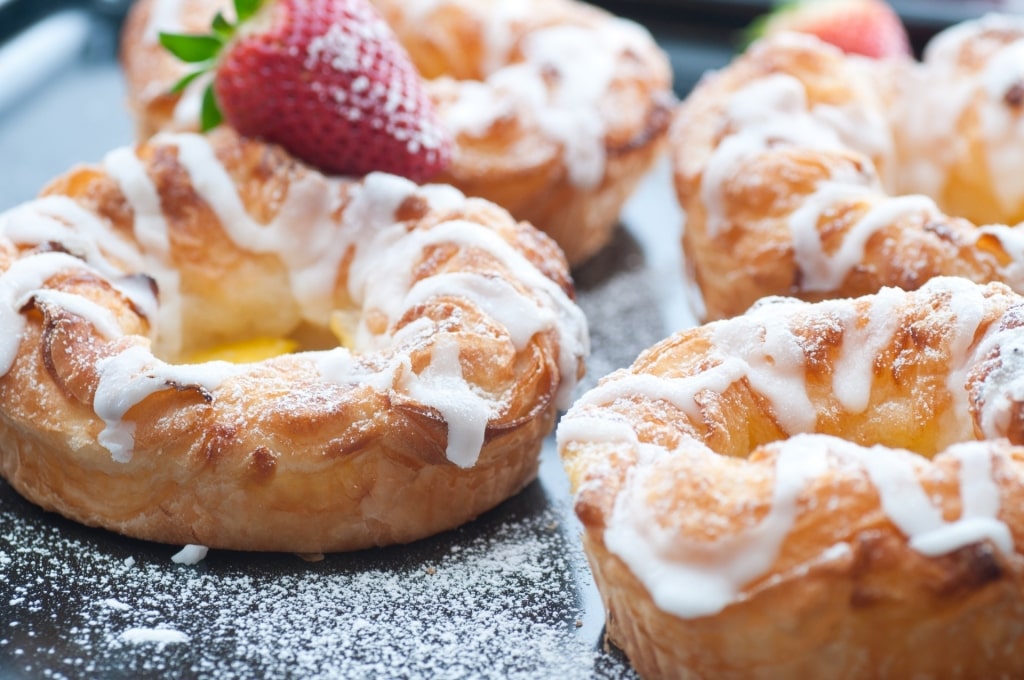
Spandauer
Known in Denmark as wienerbrød, or Viennese bread, these omnipresent pastries are believed to have been brought to Denmark by Viennese chefs.
Essentially, wienerbrød is a generic term for flaky pastry, like croissant pastry, with different fillings. It’s one of the most archetypal Scandinavian foods.
There are different versions to try. A frøsnapper is a pastry twist filled with sugar and butter and scattered with seeds, while a spandauer is round, with a custard filling and a sugar frosting glaze.
A kanelsnegel, meanwhile, is a “cinnamon snail”, with a generous amount of glaze and a rich, gooey, cinnamon-flavored filling.
Norwegian Waffles
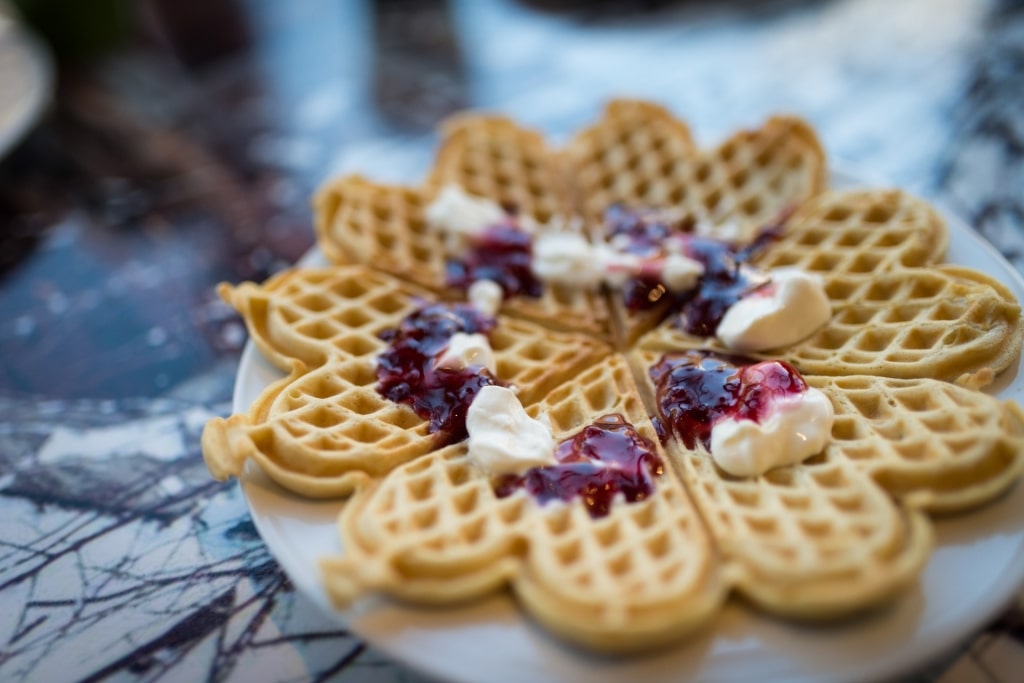
Norwegian waffles
You’ll find Norway’s famous heart-shaped waffles up and down the country, served piled high with berry jam and sour cream at morning coffee time, or for breakfast with eggs and bacon.
If you’re adventurous, try your waffle with brunost, Norway’s unusual brown cheese, with hints of caramel. A heart-shaped waffle iron makes a great souvenir of your time in Norway, too.
Cider
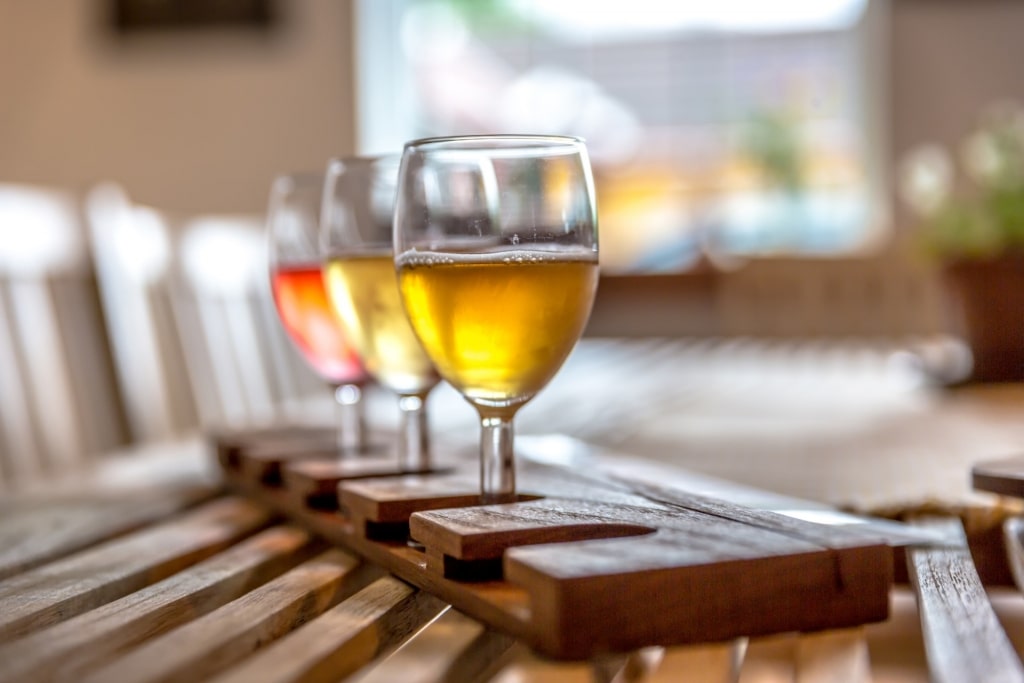
Cider
Cider is undergoing a boom in popularity in Norway. Cider from Hardanger, where there are a lot of apple orchards, is now a protected geographical designation, just like Champagne is in France.
Try some on a hot day; it’s deliciously refreshing, fizzing with tiny bubbles and bright with the tart taste of apples.
Read: European Food Guide
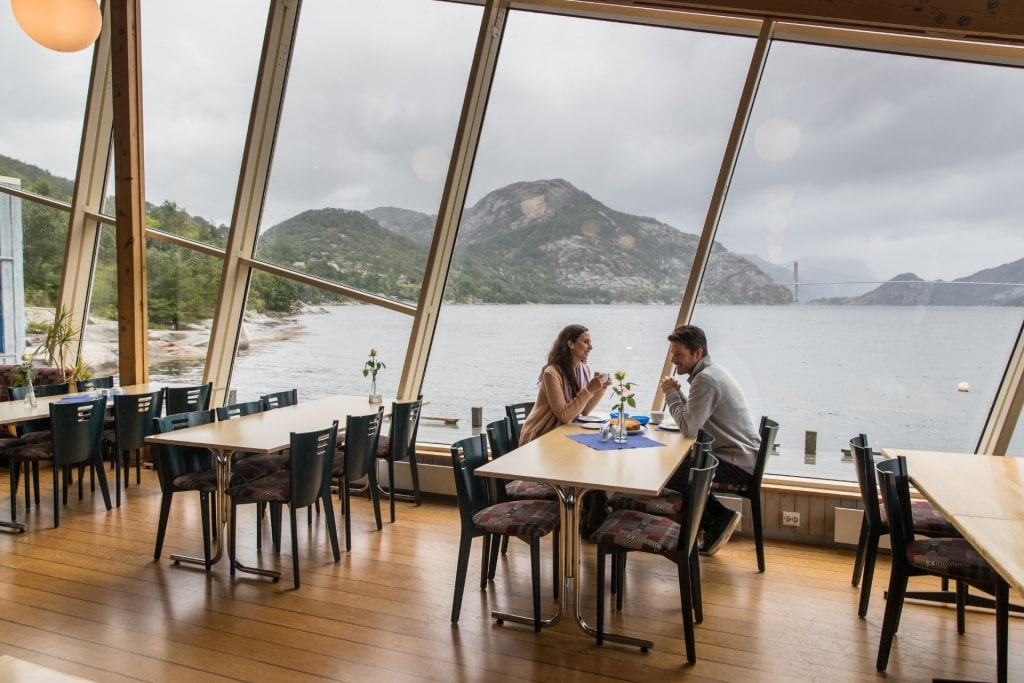
Stavanger, Norway
Are you inspired to try some of Scandinavia’s most famous dishes? Browse Celebrity’s Scandinavian cruises and plan your Nordic culinary adventure.
